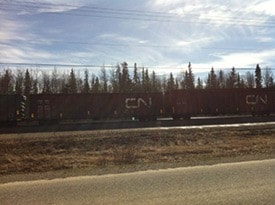Barbara Latkowski
Caledonia Courier
Canada’s 14th annual national Public Rail Safety Week will be held from April 25 to May 1.
The purpose of this week is to raise awareness about rail safety among all Canadians and to highlight the ongoing commitment of communities along with the rail industry, its member companies and their employees, in order to make Canada’s rail network even safer.
Operation Lifesaver continues to support communities such as Fort St. James by raising awareness on reducing avoidable accidents, injuries and damage caused by collisions at level crossings or incidents involving trains and citizens.
Fort St. James continues to support rail safety.
Here are some rail safety tips according to Operation Life Saver:
Trespassing on railway tracks and property is the leading cause of rail-related deaths in Canada.
Here are some tips:
- Speed Misperception
Because of their size, trains appear to be much further away and travelling much slower than their actual speed. It is east to be fooled.
- Trains Can’t stop Quickly
Trains can travel at speeds of over 160 km/h and can require over 2 kilometres to stop. Trains can stop but they cannot stop quickly.
- Trespassing
Taking a shortcut across the tracks or being on railway property is illegal and trespassers can get seriously injured or killed.
- Weight Ratio
An average freight train weighs over 5.5 million kg. (a train hitting a car is like hitting a pop can)
- Railway Cars
Stopped railway cars can move at any time. If you are on one or near one, you can lose a limb or even your life.
- Tunnels and Bridges
If you are trespassing on a bridge with a train approaching, you haven’t much choice but to jump. These tunnels and bridges are designed for trains only.
- Overhang
Trains can carry loads that are wider than the railroad cars themselves. They may have chains, straps or other equipment swinging loose from the train. If you are standing to close, you could get hit.
- Anytime is Train Time
Trains do not always run on schedule. They can run on any track, at any time and can come from either direction.
For more information about rail safety visit: operationlifesaver.ca
